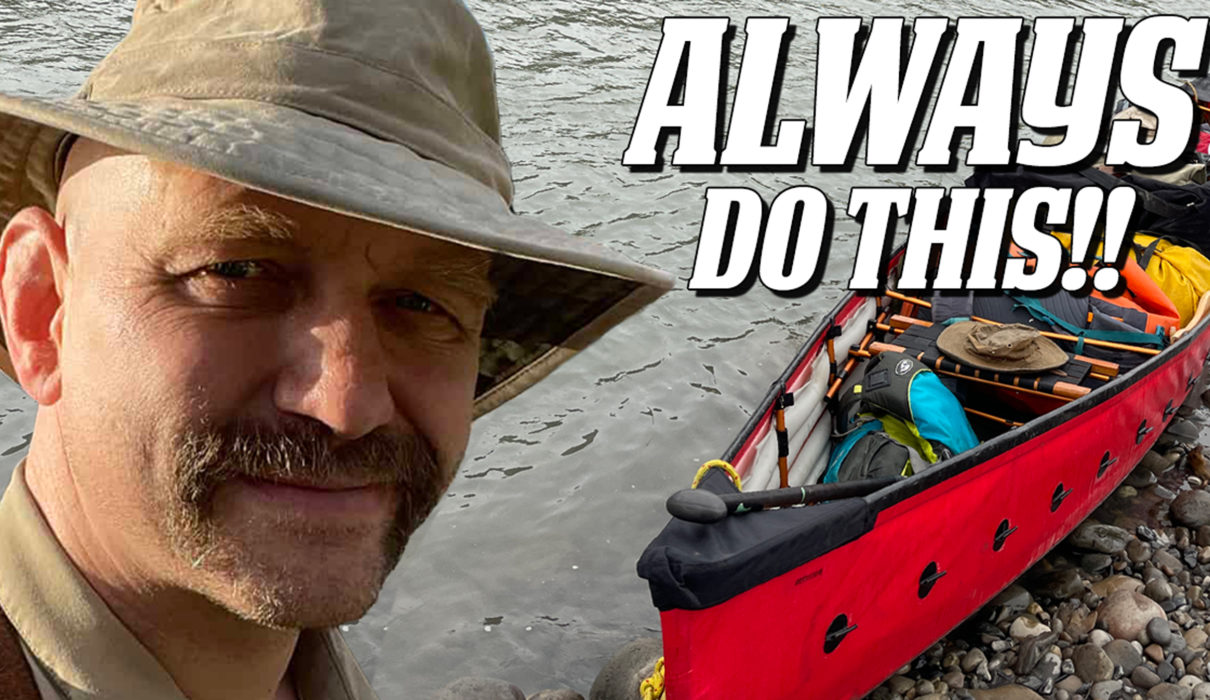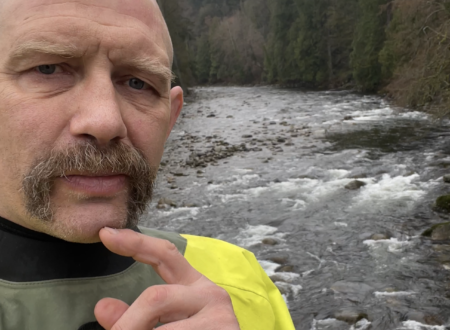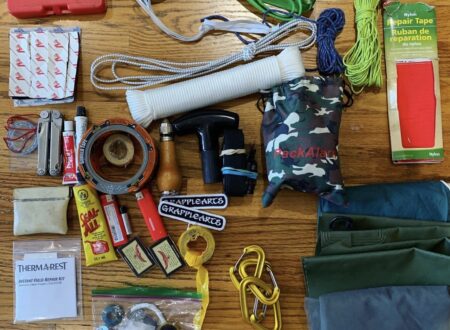Lessons repeat themselves until learned…
The first time I had a boat float away on me was on the Missinaibi River in Ontario. I had just portaged the boat down a muddy trail through the forest and arrived at the bottom of a rapid. I dropped the 16 foot Prospector into the water with just the bow pulled up on shore. I turned away for a minute and when I looked back the waves from the bottom of rapid had worked the boat off the shore and now it was drifting down the river without me.
I plunged into the cold Missinaibi River, swam to the boat, and pulled it back to shore.
The second time I had a boat get away was on the shore of Lake Superior. We were on a very wide sandbar to wait out a windstorm, huddling under a tarp and trying to breathe life into a small fire I heard it. There was nothing to tie the canoe to so I had pulled it high up onto the sand. Then – thump…. thump…. thump – I heard it before I saw it; the boat had been lifted by the wind and was now cartwheeling end over end, across 100 feet of sand and directly into the waves of Lake Superior.
I ran for the water, stripping clothes as I went, and dove into the freezing waves to bring the boat back to shore before it smashed itself to bits on the offshore rocks.
The third time I had a boat escape on me was on the Anderson River in NWT. I was doing biological research for my MSc and using Zodiac inflatable boats to access the field sites. A combination of a heavy rainstorm, a high tide at the ocean 50 miles downriver, and an intense windstorm caused the river to rise 3 feet overnight. In the morning my tent was floating, much of our gear was soaked, and the boats had drifted away. Fortunately one of the boats was still visible on the far shore of the river.
Once again I plunged into the cold water, swam to the boat, and used it to look for and recover the other boat.
The obvious lesson here is tie your boat to something solid every single time you’re not in it.
Here’s a short video talking about how doing this saved the boat from escaping in the canyons of the Nahanni River…
Tying your boat to a tree or a very large rock is the simplest answer. If these heavy objects are being blown around you have more problems than just your boat escaping.
If the weather looks calm and you’re just going ashore for a few minutes this can be a very casual affair. Here we’ve left the boat in the water and run the bow painter around the trunk of a birch tree on shore.
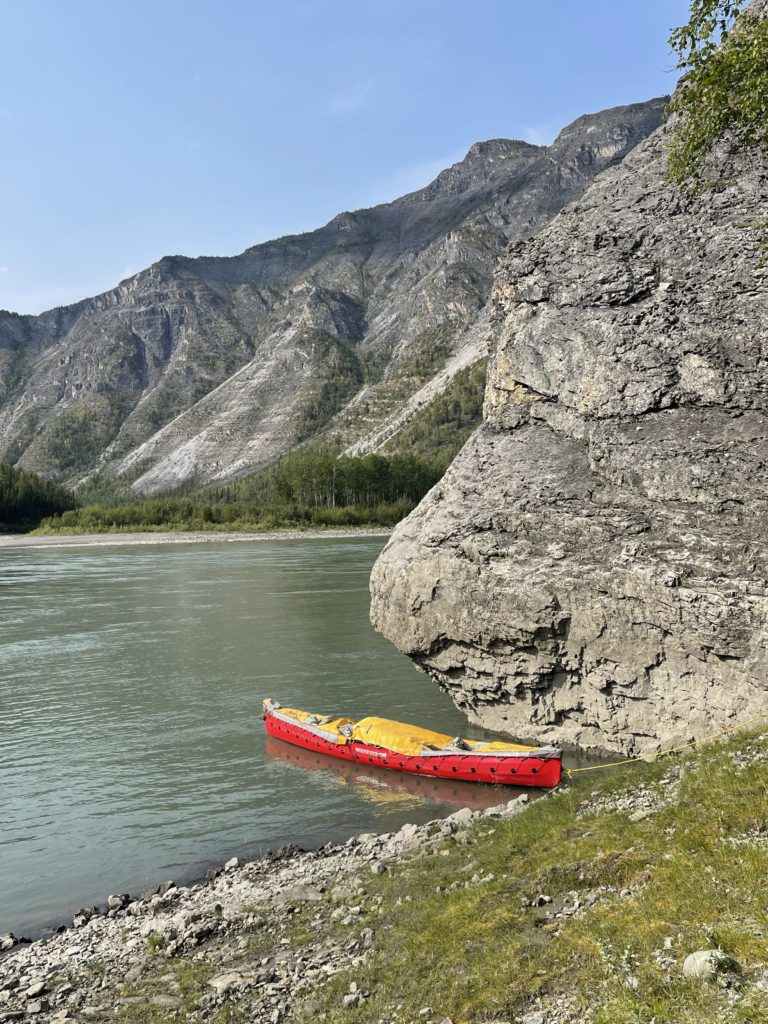
If it’s windy, or looks like it’s going to storm, you may need more security. It was very windy the evening that the photos below was taken, so you can see where we’ve tied both the front and the back of the boat to two different cottonwood trees…
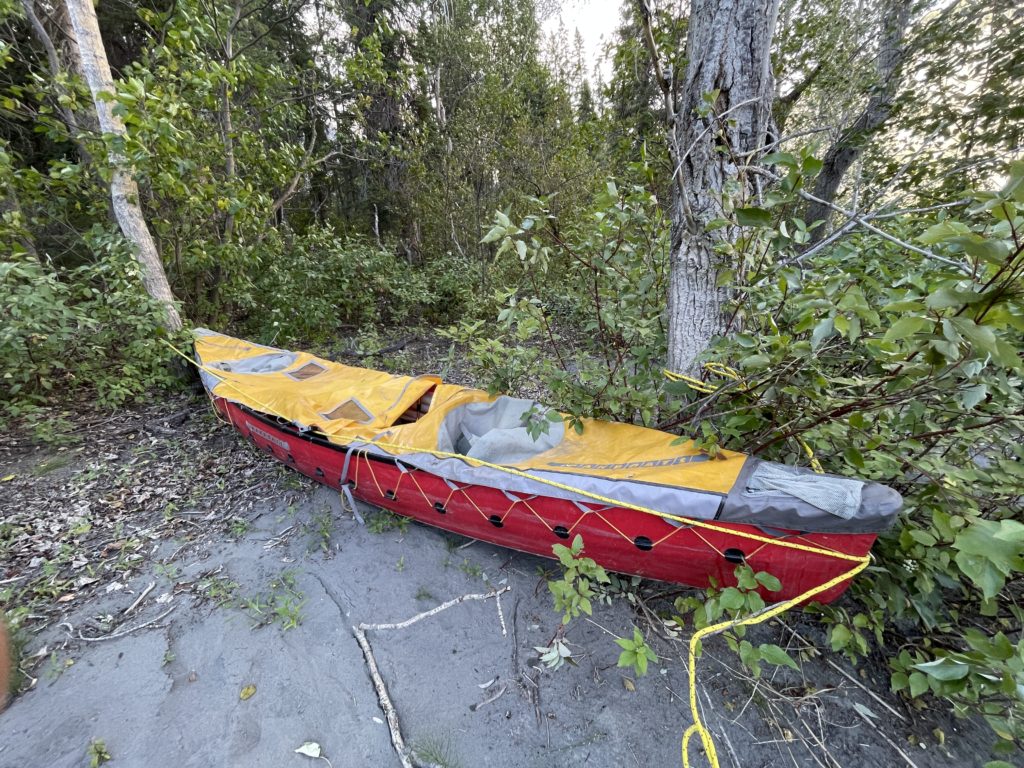
Sometimes when there are no trees available you’ll have to build an anchor point. On the Nahanni River it’s quite common to find these improvised anchors constructed from a log pinned down by lots of heavy boulders.
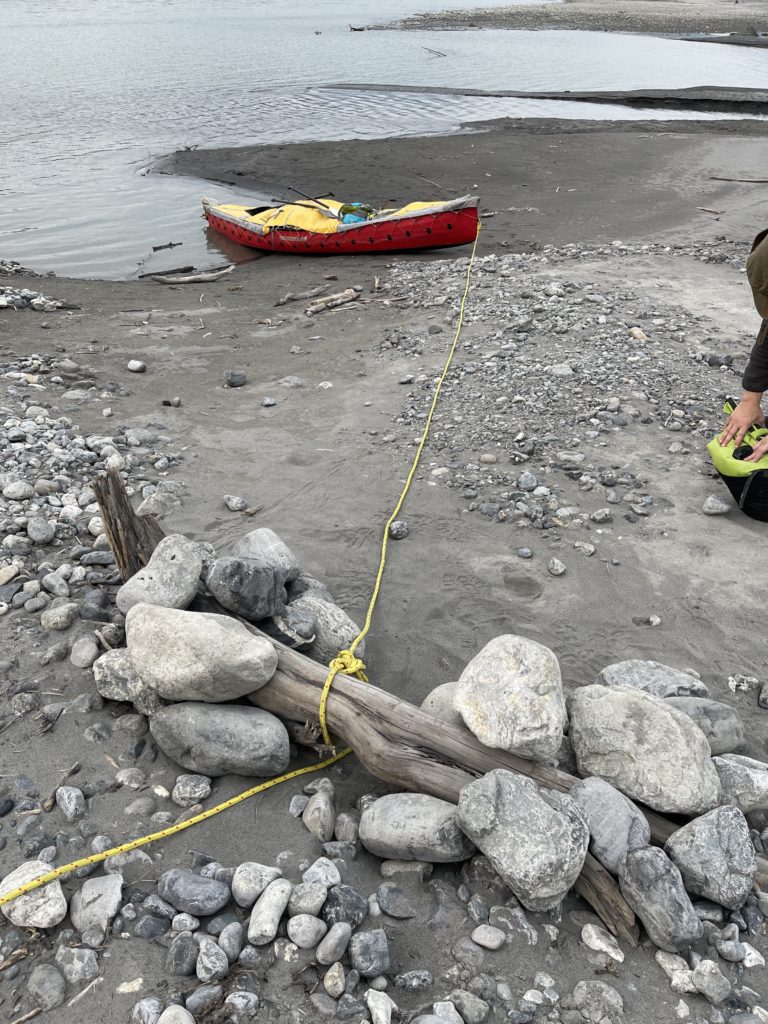
Sometimes you’ll have no logs and no large boulders to tie up to. In that case you can fill your upright boat with rocks and make it so heavy that it won’t move for anything less than hurricane-force winds. I’ve had to do this both in the treeless tundra in Nunavut and on the windswept coast of Hudson Bay.
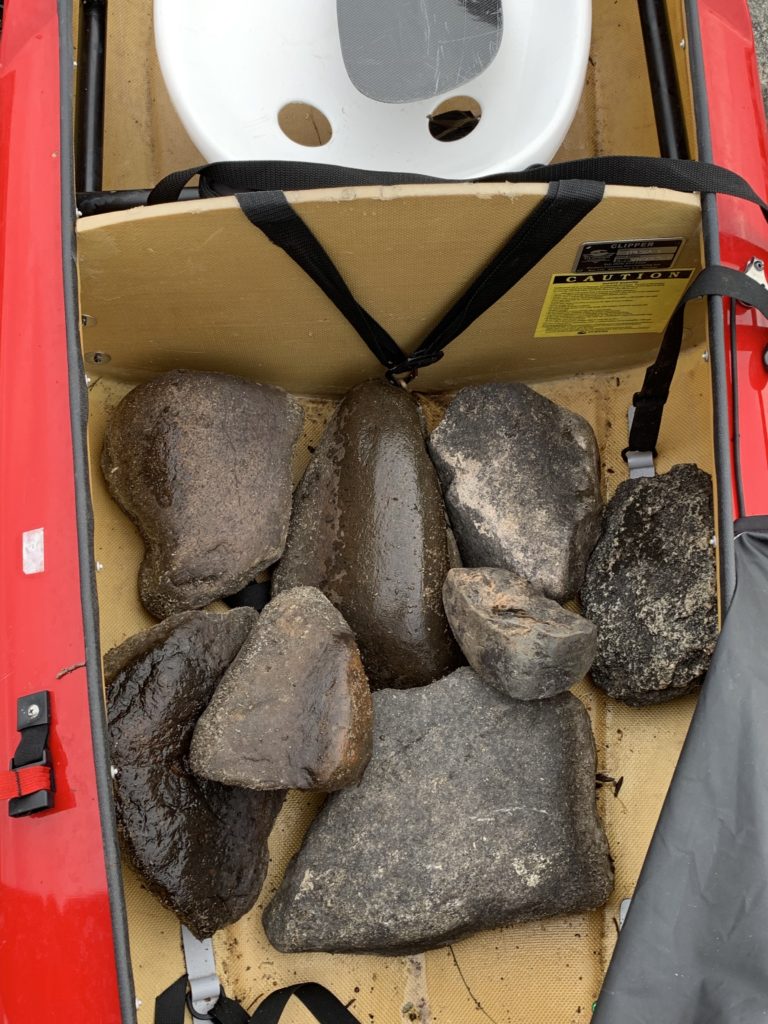
I personally know people who had to be rescued by Canadian Search and Rescue when their boat was blown away from them in the Northwest Territories. Learn from their lesson and learn from mine: always tie up your boat!
CLICK HERE TO CHECK OUT MORE ARTICLES SPECIFICALLY ABOUT CANOEING ON ESSENTIALWILDERNESS.COM.


